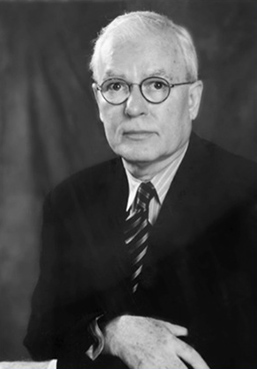
The art of writing medical advertising requires knowledge about the product and the science behind it, as well as the ability to give life to the data that renders an argument for the product both compelling and luminous with words that are fresh and memorable.
The art of writing medical advertising is especially difficult, given the medium. Unlike consumer advertising where you might be writing the only ad for a fountain pen in a magazine carrying ads for perfumes, cars, food, and clothes, in medical advertising we are often writing an ad for an antihypertensive to appear in a cardiology book in which most of the ads are for antihypertensives.
So how does a writer make an ad stand out in such circumstances? The good writer goes in search of a product’s quiddity, that which gives it distinctness. Then he or she seeks to capture that uniqueness in words and phrases that bring it to life.
The above was written by Frank Hughes for Medicine Ave.—The Story of Medical Advertising in America that was published by the Medical Advertising Hall of Fame in 1999. Hughes was part of the team that put the book together.
To write about writing is particularly challenging since readers have been alerted by the subject to watch how the author performs. In these few paragraphs, Hughes shows his skill and also gives us a picture of himself.
Most of the copy is expository writing with tangible examples for clarity, but with a few verbal flashes to give the text color. Phrases like “compelling and luminous” and “fresh and memorable” stand out against the background of direct language. And then there is the uncommon word “quiddity,” (definition: essential nature). Its use is Hughes at his best. He pulls us up short with this term just as he is making his point about distinctness, using this unusual word to enhance the sentence’s meaning.
Hughes employed challenging terms in his copy to good effect. For example, also in Medicine Ave., he begins the section on art directors with the provocative statement, “A good art director is subversive.” Then, after emphasizing the attention-getting “subversive,” he goes on to elaborate on the value of “something unexpected” and “unforgettable and part of our visual vocabulary.”
Frank Hughes’ career and his work stand out against the thousands of writers who have written medical advertising copy and resemble the successful antihypertensive ad he referred to which rises above the ordinary.
“He was the very best writer I had ever known in a quarter of a century at McAdams,” says William Wolf. This is no small compliment considering the creative resources at McAdams during Wolf’s tenure. He adds, “His headlines came as a surprise, which is characteristic of the best headlines. Sometimes, the surprise was so great, I had to refuse the copy!”
Tom Domanico, who was Hughes’ graphics partner at two agencies, has similar praise: “Best writer I’ve ever teamed with….Poetic when he had to be, but he could turn a phrase and a way of expressing it because he put so much of himself into it. The emotion was there.”
Harry Sweeney, who was Hughes’ copy chief for a time, adds, “He came with a tremendous skill and background and understanding of the craft and was able to adapt it to the craft of advertising.”
Hughes practiced what he preached about knowing the product. His partner Steve Girgenti describes him as “…enormously curious.” Girgenti continues, “He would drive every account person crazy with questions until he was satisfied that he had all the answers…to understand the market and the product or the medicine before he would put a word on paper.”
Hughes’ method, however, had another result. Again, Steve Girgenti: “Frank was very deliberate. He moved at his own pace until he was fully satisfied with what he was producing and you couldn’t rush the process… [he] wasn’t good on deadlines. But that’s why you have great account executives, to cover…the situation to make sure [you develop] the great concepts you need to produce great advertising.”
Hughes left his impression on medical advertising with his writing, but also with his personality. What Domanico said about emotion was reflected in Frank’s life within and outside advertising.
“Of all the qualities Frank possessed,” Girgenti says, “I think compassion was the number-one quality. He was enormously compassionate and considerate of others and cared a lot about people and spent time caring about people.”
Hughes has volunteered many hours at Bellevue Hospital providing comfort and conversation to AIDS patients.
Hughes is a connoisseur on a number of levels—music, art, food—and he radiates a passion on these subjects. He also has a prodigious sense of the ridiculous.
Harry Sweeney comments, “Frank has a streak that is about a mile wide of irreverence.”
Wolf adds, “Like a good Irishman, he loved a good joke. Sometimes he would laugh so hard the blood vessels in his eyes broke.”
As for his contribution to medical advertising those who have worked closely with him put it this way.
“Frank understood the primacy of copy as a driver of the whole craft,” says Harry Sweeney.
Summing up, Steve Girgenti adds, “Frank’s legacy is simply the copy he generated and the importance he placed on copy because without great copy the ad doesn’t have much meaning.”